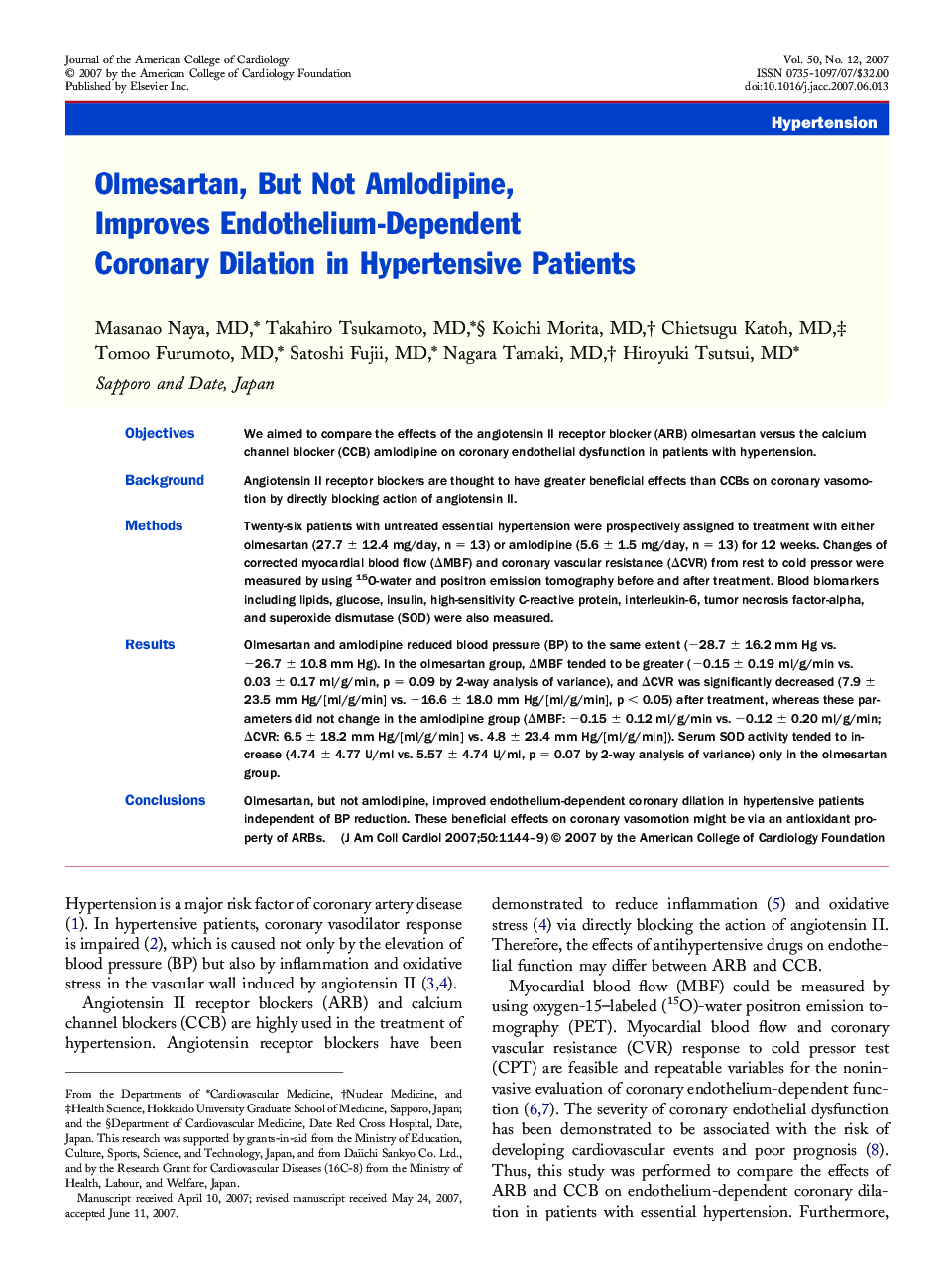| کد مقاله | کد نشریه | سال انتشار | مقاله انگلیسی | نسخه تمام متن |
|---|---|---|---|---|
| 2953270 | 1577456 | 2007 | 6 صفحه PDF | دانلود رایگان |

ObjectivesWe aimed to compare the effects of the angiotensin II receptor blocker (ARB) olmesartan versus the calcium channel blocker (CCB) amlodipine on coronary endothelial dysfunction in patients with hypertension.BackgroundAngiotensin II receptor blockers are thought to have greater beneficial effects than CCBs on coronary vasomotion by directly blocking action of angiotensin II.MethodsTwenty-six patients with untreated essential hypertension were prospectively assigned to treatment with either olmesartan (27.7 ± 12.4 mg/day, n = 13) or amlodipine (5.6 ± 1.5 mg/day, n = 13) for 12 weeks. Changes of corrected myocardial blood flow (ΔMBF) and coronary vascular resistance (ΔCVR) from rest to cold pressor were measured by using 15O-water and positron emission tomography before and after treatment. Blood biomarkers including lipids, glucose, insulin, high-sensitivity C-reactive protein, interleukin-6, tumor necrosis factor-alpha, and superoxide dismutase (SOD) were also measured.ResultsOlmesartan and amlodipine reduced blood pressure (BP) to the same extent (−28.7 ± 16.2 mm Hg vs. −26.7 ± 10.8 mm Hg). In the olmesartan group, ΔMBF tended to be greater (−0.15 ± 0.19 ml/g/min vs. 0.03 ± 0.17 ml/g/min, p = 0.09 by 2-way analysis of variance), and ΔCVR was significantly decreased (7.9 ± 23.5 mm Hg/[ml/g/min] vs. −16.6 ± 18.0 mm Hg/[ml/g/min], p < 0.05) after treatment, whereas these parameters did not change in the amlodipine group (ΔMBF: −0.15 ± 0.12 ml/g/min vs. −0.12 ± 0.20 ml/g/min; ΔCVR: 6.5 ± 18.2 mm Hg/[ml/g/min] vs. 4.8 ± 23.4 mm Hg/[ml/g/min]). Serum SOD activity tended to increase (4.74 ± 4.77 U/ml vs. 5.57 ± 4.74 U/ml, p = 0.07 by 2-way analysis of variance) only in the olmesartan group.ConclusionsOlmesartan, but not amlodipine, improved endothelium-dependent coronary dilation in hypertensive patients independent of BP reduction. These beneficial effects on coronary vasomotion might be via an antioxidant property of ARBs.
Journal: Journal of the American College of Cardiology - Volume 50, Issue 12, 18 September 2007, Pages 1144–1149